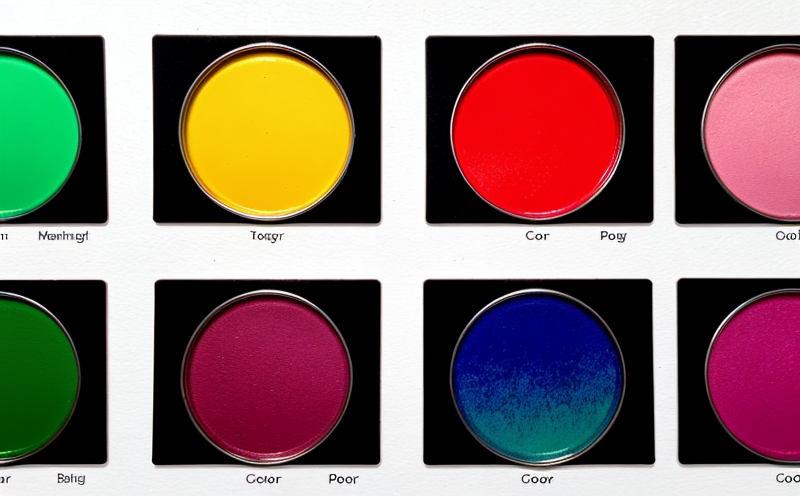IES LM 79 Spectral Distribution Testing of Solid State Lighting Products
The IES LM-79 standard provides a framework for the measurement and calculation of luminous flux, electrical power consumption, and spectral distribution for solid-state lighting (SSL) devices. This testing is crucial in ensuring that SSL products meet stringent performance criteria set by regulatory bodies like DOE, EC, and others.
The LM-79 methodology involves detailed measurements and calculations to derive the spectral power distribution (SPD) of SSL products. This includes capturing light output across a broad spectrum, from ultraviolet to infrared wavelengths, which is essential for understanding how these lights behave in different environments. The test setup typically requires specialized equipment capable of measuring both forward and backward light emission. Specimen preparation involves ensuring that the fixture housing the light source is stable and free of any distortion that could affect measurement accuracy.
The LM-79 standard specifies strict requirements regarding the placement of sensors, temperature control systems, and data acquisition units. These components must be carefully positioned to ensure accurate readings while minimizing interference from external factors such as ambient lighting or heat sources nearby. The testing process itself is time-consuming due to the need for repeated measurements under various conditions—such as different temperatures and luminous flux levels—to account for variations in SSL performance.
One of the key aspects of LM-79 compliance involves meeting specific acceptance criteria regarding efficiency, color fidelity, and consistency across batches of manufactured products. Efficiency ensures that energy consumption aligns with advertised values; color fidelity guarantees accurate reproduction of colors intended by designers; while batch-to-batch consistency minimizes variability in product quality.
Implementing LM-79 testing helps manufacturers comply with international regulations aimed at reducing waste, conserving resources, and promoting sustainable practices within the lighting industry. By adhering to these standards, companies can demonstrate their commitment to environmental responsibility while also enhancing brand reputation through transparent disclosure of product performance metrics.
| Applied Standards | Description |
|---|---|
| IES LM-79-10 | This standard defines procedures for measuring and calculating luminous flux, electrical power consumption, and spectral distribution of solid-state lighting devices. |
| IEC 62788 | A series of standards addressing photometry and colorimetry in general lamps, including those based on light-emitting diodes (LEDs). |
Why It Matters
Accurate spectral distribution testing is vital for several reasons. Firstly, it ensures that SSL products perform as expected in terms of energy efficiency and color rendering. Secondly, compliance with LM-79 helps manufacturers meet regulatory requirements imposed by governments worldwide. Lastly, this type of testing allows for continuous improvement in product design by identifying areas where improvements can be made.
Energy efficiency is a critical factor when considering the environmental impact of lighting solutions. By accurately measuring the spectral distribution, we can better understand how much energy each SSL device uses and compare it against similar products. This information is essential not only for individual consumers but also for larger organizations looking to reduce their carbon footprint.
Color fidelity plays a significant role in many applications where precise color reproduction is required. Whether it's in retail settings, museums, or even medical facilities, ensuring that colors appear as intended enhances the overall experience and reduces discrepancies between what was originally designed and what ultimately gets delivered.
Consistency across batches of manufactured products ensures reliability and trustworthiness among consumers. Knowing that every unit meets the same high standards provides reassurance about the quality of each product purchased. This consistency also facilitates smoother supply chain management, as there is less variability in performance between different production runs.
Applied Standards
| Standard Name | Description |
|---|---|
| IES LM-79-10 | Defines procedures for measuring and calculating luminous flux, electrical power consumption, and spectral distribution of solid-state lighting devices. |
| IEC 62788 | A series of standards addressing photometry and colorimetry in general lamps, including those based on light-emitting diodes (LEDs). |
| ASTM E3012 | Standard guide for testing solid-state lighting devices. |
| EN 62788 | European standard equivalent to IEC 62788, covering photometry and colorimetry in general lamps, including LED-based fixtures. |
Use Cases and Application Examples
| Application Example | Description |
|---|---|
| Smart Home Lighting Systems | Ensuring that smart bulbs provide accurate color temperatures and consistent brightness levels across all devices connected to the network. |
| Medical Imaging Facilities | Maintaining proper color accuracy for diagnostic images, which is crucial for accurate diagnoses by healthcare professionals. |
| Retail Stores | Providing consistent lighting conditions throughout stores, enhancing customer shopping experiences and improving product visibility. |
| Art Galleries | Preserving artwork by using lights that do not alter the colors of paintings or sculptures over time. |
The IES LM-79 testing process plays a pivotal role in these applications, ensuring that SSL products meet all necessary criteria and perform optimally within their intended environments. For instance, smart home lighting systems rely heavily on accurate color temperature adjustments to create ambiance or enhance productivity depending on the time of day.
In medical imaging facilities, precise color accuracy is vital for diagnosing conditions accurately based on images captured during examinations. Retail stores benefit from consistent lighting conditions that improve product visibility and customer satisfaction.
Art galleries need to use lights that do not alter the colors of paintings or sculptures over time, preserving these valuable artifacts for future generations. By adhering to LM-79 testing procedures, manufacturers can ensure their products perform reliably in diverse settings while meeting strict regulatory requirements.





